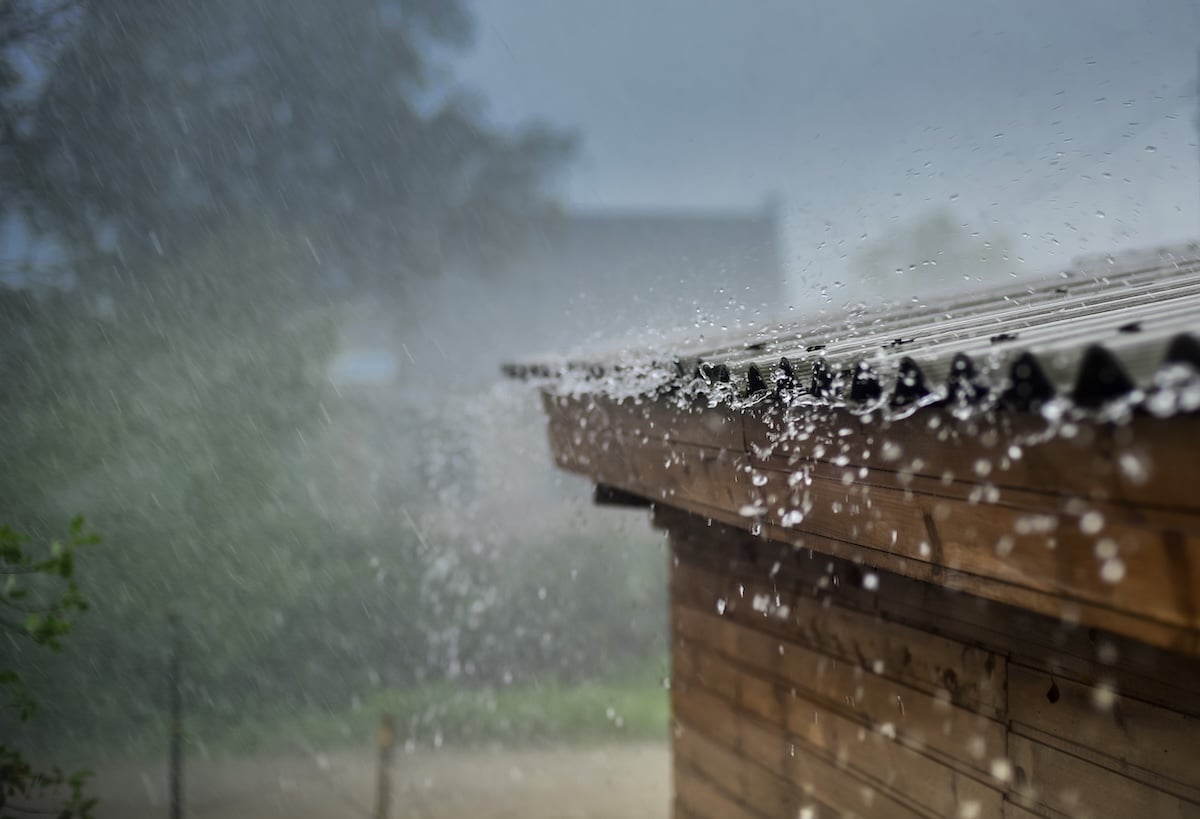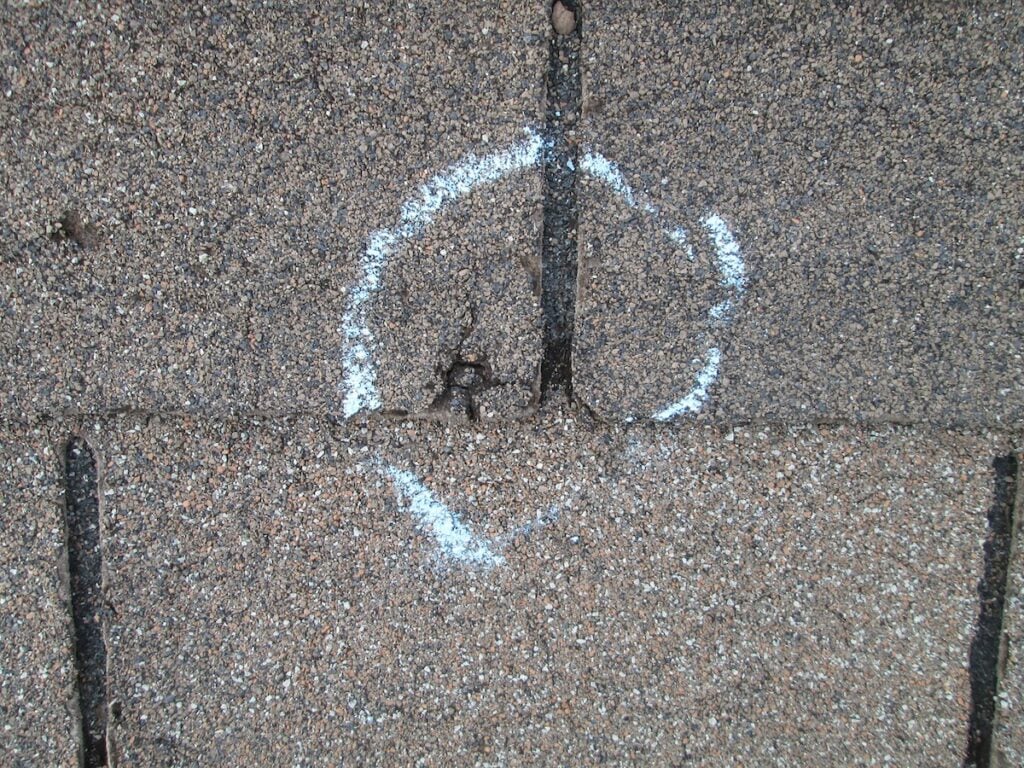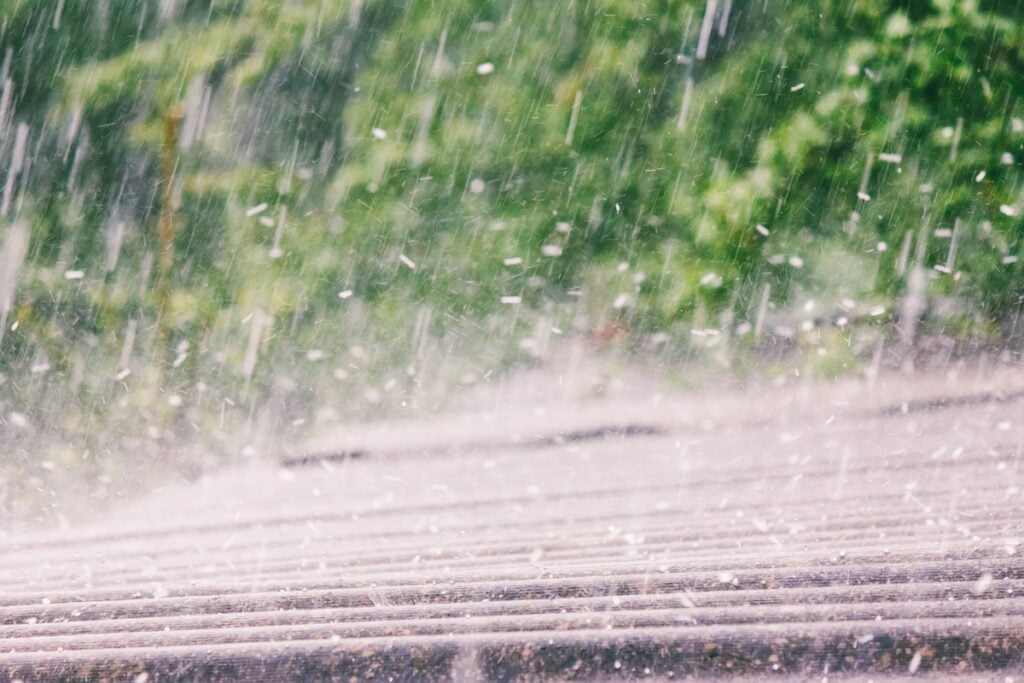
What Does Hail Damage Look Like On A Roof?
Storm Damage
July 8,2025
If you’re wondering what does hail damage look like on a roof, you’re not alone. After a storm rolls through, most homeowners can spot dented cars and shredded landscaping—but the signs on your roof are often more subtle. Left unchecked, hail damage can compromise your roof’s ability to protect your home and lead to costly repairs down the road.
In this guide, we’ll explain:
- What visible and hidden hail damage looks like on different roofing materials.
- How to inspect your roof safely after a storm.
- What steps to take if you suspect your roof has been damaged.
A quick visual check could save you thousands if you know what to look for.
🌨️ How Hail Damages Roofing Materials
The impact of hail isn’t always immediately obvious, but even small hailstones can leave lasting marks depending on size, wind speed, and roof type.

Surface Bruising and Granule Loss
- Asphalt shingles may appear intact but have dents where granules have been knocked loose.
- Exposed spots can lead to UV damage and shortened shingle life.
- You may see granules collecting in gutters or at the base of downspouts.
Cracks and Fractures
- Hard hail impact can crack asphalt, wood shake, tile, or synthetic materials.
- Cracks create entry points for water, especially around flashing or ridgelines.
- These fractures often develop leaks over time if not repaired.
Denting on Metal Components
- Metal roofing, flashing, and vents may show visible dents.
- Even cosmetic damage can lower the roof’s lifespan or impact resale value.
- Hail can also loosen fasteners or compromise seams over time.
❗️ What to Look for on Different Roofing Materials
Each roofing material reacts differently to hail, which is why knowing what to look for matters.

Asphalt Shingles
- Dark, round spots or bruises where granules are missing.
- Soft areas that feel spongy under light pressure.
- Torn, curled, or cracked tabs near the impact zones.
Metal Roofing
- Circular dents in panels or ridges.
- Distortion in flat areas where hail hit directly.
- Fasteners that appear loose or lifted.
Tile or Slate Roofing
- Chipped corners or broken pieces.
- Cracks that run through the tile body.
- Pieces of tile found around the home’s perimeter after the storm.
Wood Shake or Cedar
- Sharp splits running along the grain.
- Fresh-looking breaks with minimal weathering.
- Splinters or fragments found in gutters or on walkways.
⭐️ 5 Key Signs of Hail Damage After a Storm
Not sure if your roof took a hit? Here’s a simple checklist to spot the most common warning signs.
- Granules in the Gutters: Check your gutters and downspouts for asphalt granules. These tiny particles help protect shingles from sun damage, and a sudden loss is often caused by hail impact.
- Dents on Roof Vents and Flashing: Even if shingles appear fine from the ground, metal components like ridge caps, vents, and flashing can show visible hail dents. These are often easier to spot and can indicate the rest of the roof needs closer inspection.
- Discoloration or “Bald” Spots: Dark patches on the roof may mean granule loss. Look for uneven coloring, which can make shingles age faster and lead to leaks.
- Loose or Curled Shingles: Hail can cause shingles to lift, loosen, or curl at the edges. This damage may not cause leaks right away, but it increases the risk of water infiltration with the next heavy rain.
- Roof Debris Around Your Home: Shingle fragments, cracked tiles, or shake splinters on the ground after a storm are strong indicators that hail has compromised your roof.
🔍 How to Inspect Your Roof After Hail
If you think your home was in the path of a hailstorm, it’s important to do a safe and thorough check.
Inspect From the Ground First
- Walk around the house and check for shingle fragments, chipped tile, or gutter dents.
- Use binoculars to scan for dark spots, curled edges, or torn sections.
- Take photos of any roof components or accessories that show signs of impact.
Look at Other Outdoor Damage
- Dented mailboxes, air conditioning units, or window screens are a strong hint your roof was affected too.
- Check fencing, decks, and patio furniture for pockmarks or chipped paint.
When in Doubt, Call a Professional
Roof damage isn’t always visible from the ground. A licensed contractor can:
- Identify minor impact areas you may have missed.
- Check for soft spots or underlying water issues.
- Provide documentation if repairs or a replacement are needed.

👉 Why Hail Damage Shouldn’t Be Ignored
Even if you don’t see active leaks, hail damage has long-term effects on roof performance and your home’s protection.
- Shortened lifespan: Damaged shingles deteriorate faster, leaving the roof vulnerable to wind and water.
- Hidden moisture: Cracks and soft spots may let in water slowly, leading to mold or structural damage over time.
- Insurance complications: Delayed action could limit your options or lead to a claim denial if the damage worsens.
- Property value concerns: Roof damage shows up in inspections and appraisals—fixing it proactively avoids surprises.
📋 What to Do if You Suspect Hail Damage
Follow these steps to ensure your roof is properly inspected and repaired after a storm.
- Document Everything: Take clear photos of visible damage on the roof, gutters, siding, and surrounding areas. Keep notes of the storm date and any changes you’ve noticed inside or outside the home.
- Schedule a Professional Inspection: Call a licensed roofing contractor to assess the roof and provide an estimate if repairs are needed. Make sure they check flashings, ridges, valleys, and vents—not just shingles.
- Avoid Temporary Fixes: Some damage can worsen if improperly patched. Avoid using sealants or DIY repair kits until a professional evaluates the roof.
- Monitor Interior Ceilings and Attic: Leaks can develop slowly. Check ceilings, corners, and attic spaces over the next few weeks for stains, drips, or moisture buildup.
- Take Preventive Action: Even if damage is minor, ask your roofer if protective coatings, improved ventilation, or small repairs can extend the life of your roof after a storm.
🤝 Why Homeowners Trust FoxHaven Roofing Group
At FoxHaven Roofing Group, we’ve seen firsthand how unpredictable hailstorms can leave homeowners unsure about what comes next. That’s why we offer expert guidance, honest evaluations, and dependable service—no scare tactics, just solutions.
Homeowners choose us because:
- Our team understands Florida’s weather patterns and roofing needs.
- We prioritize education so you can make informed decisions.
- Our inspections are thorough, pressure-free, and focused on long-term value.
Contact us today to keep your roof strong through every season.

